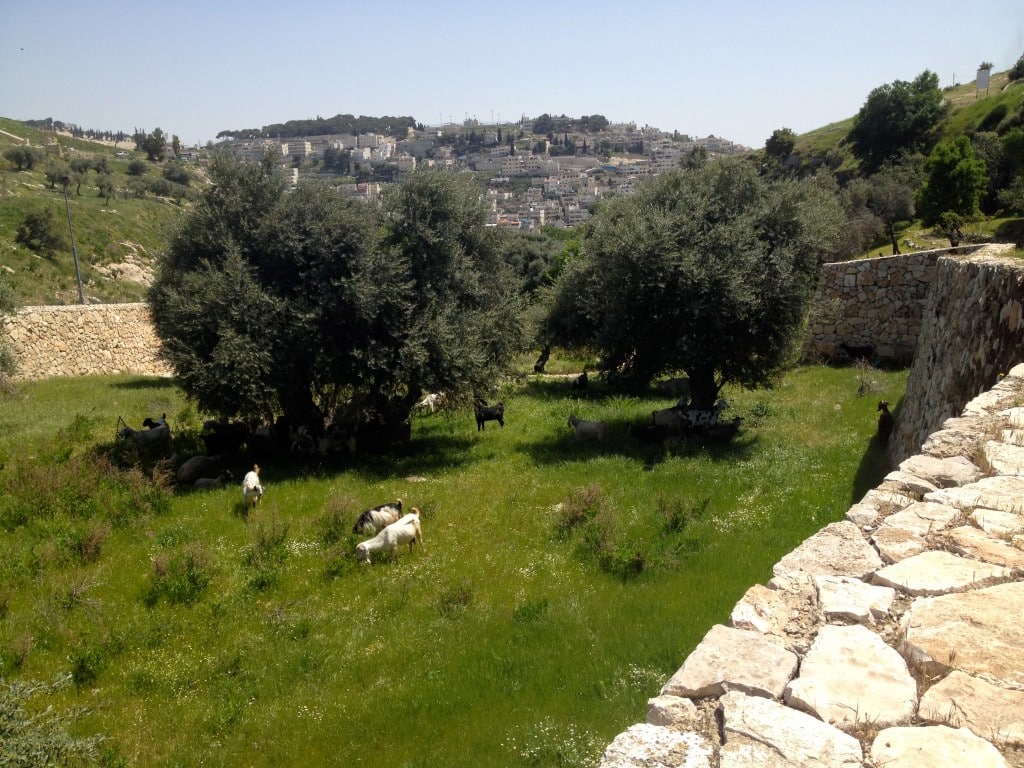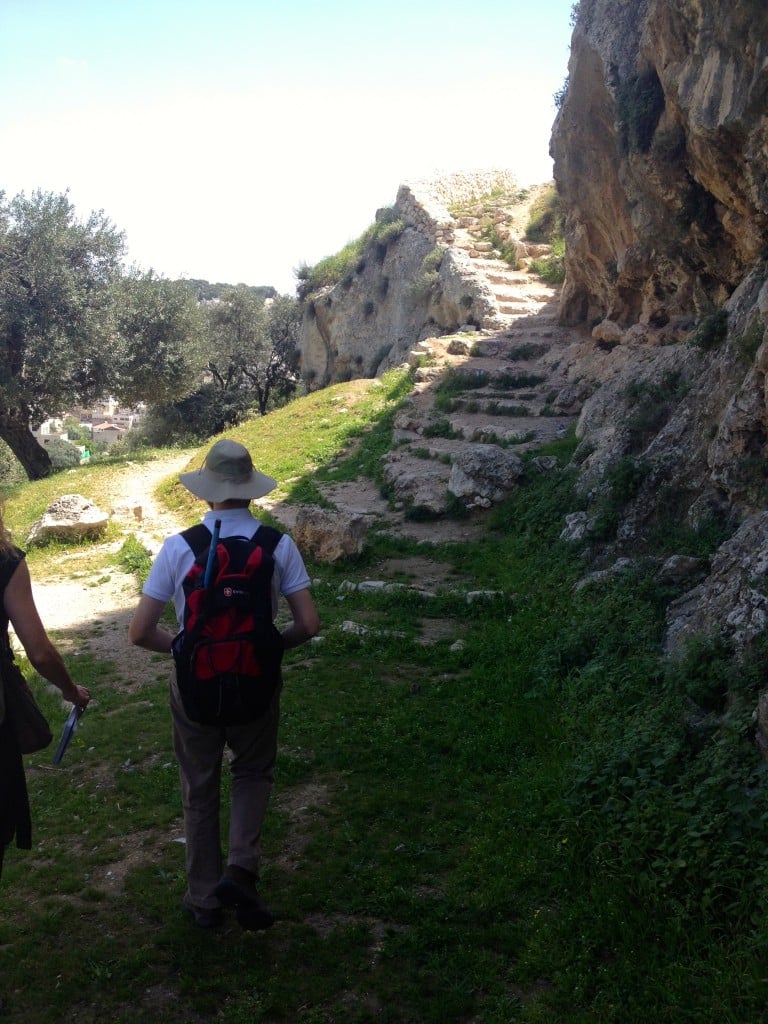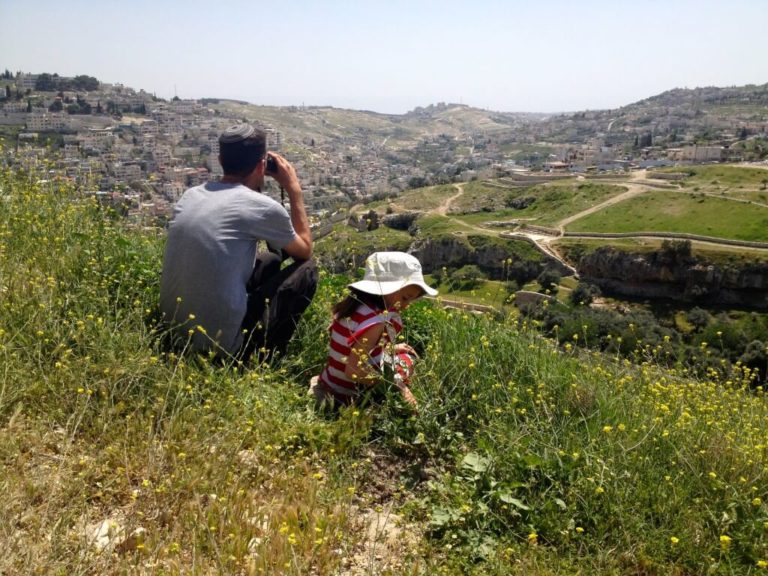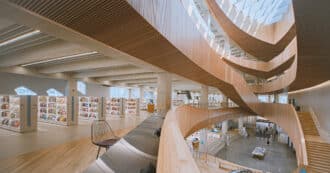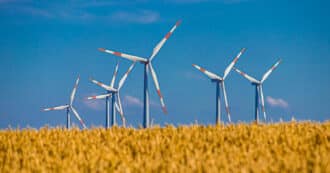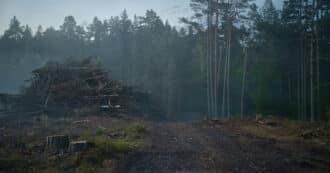By Jenna Basman, intern for The Interfaith Center for Sustainable Development and a tour participant
In the spring of 2014, The Interfaith Center for Sustainable Development is offering open-enrollment ecological tours in and around Jerusalem. These tours explore the rich history and culture of the holy land from a natural perspective by visiting sites like the beautiful Cedars Valley forest and the largest outdoor food market in Israel -Machane Yehuda. This post focuses on a tour of the tree-filled Hinnom Valley near the Old City of Jerusalem that was held in April.
I knew this excursion wasn’t going to take me to the typical site on the tourist map. Climbing near ancient ritual immersion baths, tombs, and ruins near wild fig trees and barley plants left me feeling awestruck. I had no idea that between two big city roads, there is lush, green nature so close. Religious, political, cultural, and ecological history seeps in every crack and crevice of the Hinnom Valley and this tour gave me a peak into the complexities and challenges that inhabit its beauty. The Hinnom Valley is one of the main valleys next to the Old City of Jerusalem, on the Western side below Jaffa Gate and Mt. Zion. The first reference in the Bible of the valley is in the book of Joshua (15:8) describing the valley as the border of the tribe of Judah.
After taking the train and walking down a busy road, we started the trail downhill into the Hinnom Valley and the muffled road sounds started to fade away. I never realized how accessible nature was in Jerusalem! In the middle of a busy and chaotic city, we saw goats roaming, iguanas crawling, birds flying, and a donkey rider out in the fields. This tour exemplified that with little effort, you can leave behind cell phones and traffic lights and enter into serenity and connection with the land. The valley is infamous in the Bible as the site of pagan child sacrifice. It is mentioned five times in the Book of Jeremiah (7:31,32 19:2,6 32:35) as the location where people would “burn their sons and daughters in the fire.”
Fortunately there is no child sacrifice in the valley today; but the valley faces other challenges. The Hinnom Valley connects to the Kidron Basin Creek, which flows into the Judaean Desert and the Dead Sea. Palestinians and Israelis have been debating for decades over how to share treated wastewater for agriculture from a proposed sewage treatment plant in East Jerusalem. Since they have yet to come to any agreement, no such treatment plant exists.(see the article by Thomas Friedman on this by clicking here (NY Times, February 8, 2014). Each day, 35,000 cubic meters of raw sewage flows through the Kidron Basin Creek to the Dead Sea, turning this beautiful ecosystem into a precarious health and environmental hazard. Although I thoroughly enjoyed the beauty of the Hinnom Valley, this tour helped me realize its fragility as it connects to other ecosystems in the region. This tour taught me about some of the origins and implications of this wastewater issue and possible initiatives to rehabilitate the Kidron Creek Basin.
Hiking up the hill to a beautiful observation point, we looked out into the different neighborhoods and saw where the fertile land ended and the desert began. We then got to explore an excavation site that has remnants from the 1st and 2nd Temple, Hasmonean, and Byzantine periods. We met with an expert archeologist who has worked for the Israel Antiquities Authority for over 20 years and he showed us his personal findings by a 2nd temple mikvah surrounded by weeds and stones while eating local figs (one of the 7 species of Israel), I felt completely connected and engaged with the land. This was so much deeper than traditional sightseeing of historical sites in Jerusalem. Sitting on stones near the ancient walls of the city, we enjoyed our lunch and discussed possible ways to get people involved with environmental efforts taking place here. In order for people to care, they need to value this space as a social, ecological, historical, and beautiful landscape. It starts with us. We need to help people reconnect with this land more and educate about how every action of our community directly affects our environment. *
We agree with this tour participant and that’s exactly what we’re trying to do! It really does take a village. If you have ideas for a tour or an educational activity, we want to hear about it! Contact us here or call us at Tel: (054) 723-4973 (Israel).
